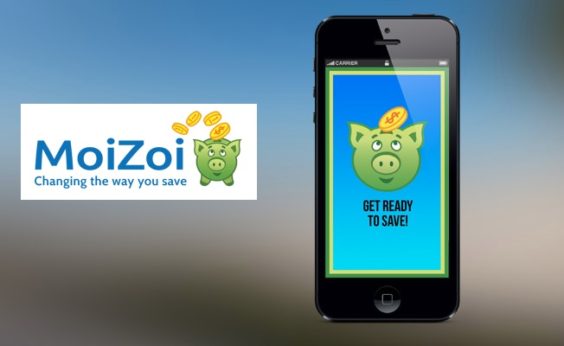
Every time you turn around, it seems there’s a startup founded by someone who thinks they’re the first person who’s ever wondered why we’re still using paper grocery coupons. Wouldn’t it be easier to just snap photos of those scraps of paper, and transform them into digital coupons? Why not invent something that does just that? Genius!
Except there’s a good reason no one has successfully implemented such an idea – because it’s much easier said than done. And it’s going to take a lot more than a wide-eyed outsider with an idea, to transform an industry that involves countless individual manufacturers, retailers, coupon publishers and clearinghouses.
But now, there’s a new startup that hopes it has the answer – and is determined to make it happen.
A pair of North Carolina entrepreneurs recently received a U.S. patent for their method of converting paper manufacturer’s coupons to digital coupons. They call it MoiZoi, and hope to have it up and running as a mobile app by late next year.
“My wife is a couponer,” MoiZoi co-founder Scott Powell told Coupons in the News. “Just seeing the struggles she’s gone through, it all seems so silly when we have a smart device sitting in our pockets.”
Powell “came to me with the idea,” said co-founder Evelyn Hennessy. “I like coupons, but I always forget them. Every time I’d clip them, I’d leave them at home.”
So the two of them set out to find a solution – unaware that another entrepreneur was already doing the same. While MoiZoi’s patent application was still under review, SnipSnap launched as “the first app to scan, save, and redeem printed coupons on your mobile phone.”
But SnipSnap has had some well-documented troubles, including retailers who refuse to allow their coupons on the app, a coupon publisher that has sued the company, and a plan for supporting manufacturer’s coupons that’s fraught with flaws. There’s no method described in SnipSnap’s own recent patent application that would prevent users from taking multiple photos of the same paper manufacturer’s coupon, and using it again and again.
MoiZoi’s creators say they’ve come up with a better solution. Paper coupons would need to be “stamped” with a MoiZoi-provided logo in order to be recognized by, and uploadable to, the app. Unstamped coupons would not be able to be uploaded, and stamped coupons would be considered void and couldn’t be used again.
Ultimately, the co-founders envision that even non-smartphone users can participate, either by scanning their coupons to their desktop, or bringing their coupons to a store kiosk, and having them stamped and uploaded to a loyalty program-style coupon card. “We’re hoping as the app gets popular, cashiers will be aware of what to look for” and reject stamped coupons, Powell explained. “That’s really our only way of trying to curb reuse.”
Someone would still have to process those digitized coupons, though, and ensure that manufacturers can track them, and that retailers get reimbursed for them. Powell said they may pursue something like the Netflix model – sending envelopes to users, for them to fill with their stamped coupons, and mail them back. Then MoiZoi can track which uploaded coupons are redeemed, and either process their paper counterparts for redemption, or turn them over to a coupon processor.
“The whole goal is to help users get a benefit from coupons,” Powell said. And with so many billions of paper coupons going unused each year, Hennessy added, “why wouldn’t manufacturers want them to be used?”
Of course, manufacturers expect – and budget for – a certain percentage of their coupons to go unused. And one could argue that if manufacturers wanted their paper coupons to be digital, they’d release digital coupons themselves instead of allowing someone to digitize their paper ones. So if MoiZoi is promising to increase coupon redemption rates by turning paper coupons into digital coupons, what’s in it for the manufacturers who issue all of those paper coupons?
MoiZoi’s founders say manufacturers will be able to tap into the app’s database of registered users, to learn precisely who’s using their coupons – something they can’t do when a paper coupon is redeemed anonymously. Companies might even be able to put ads and information about their products in the app, so they have more to offer users than just a discount. “You can do a lot more things in an app than on a piece of paper,” Powell said.
Even with MoiZoi’s attempts to make the whole process watertight and fraud-proof, there are still some potential pitfalls. A user might make high-quality photocopies of a coupon, for example, stamp each one, and upload those to the app multiple times. A user could redeem coupons via the app and neglect to mail them in, so a retailer that accepts the in-app coupons might have a hard time getting reimbursed. And for an app that aims to make life easy for people who can’t be bothered cutting out and remembering to use paper coupons, replacing those steps with the cumbersome tasks of stamping, photographing and mailing coupons could prove to be too much to ask.
It may not be a perfect system yet, but “with the technology that’s currently out there, this is the best way,” Hennessy said. She holds out hope that some form of future technology could emerge, that will supplant the stamping and mailing method. “We will continue to improve,” she vowed. “We will find a way.”
Many have already tried and failed – and others are still trying. Through a combination of technology and determination, MoiZoi’s founders hope their idea will turn out to be the one that succeeds.















